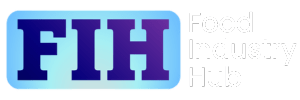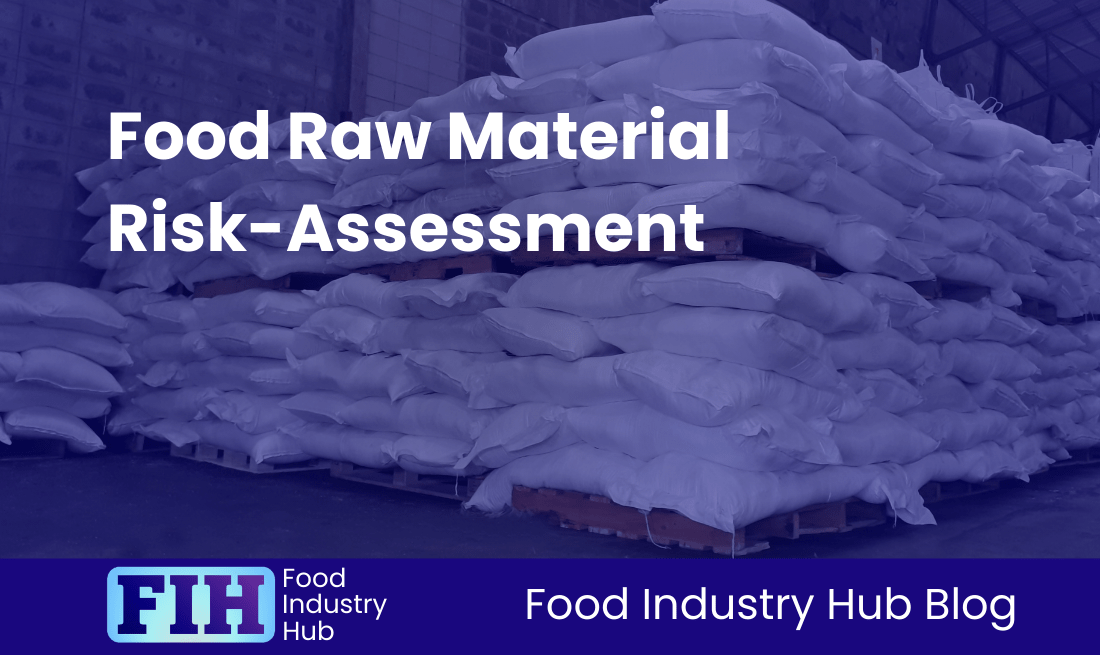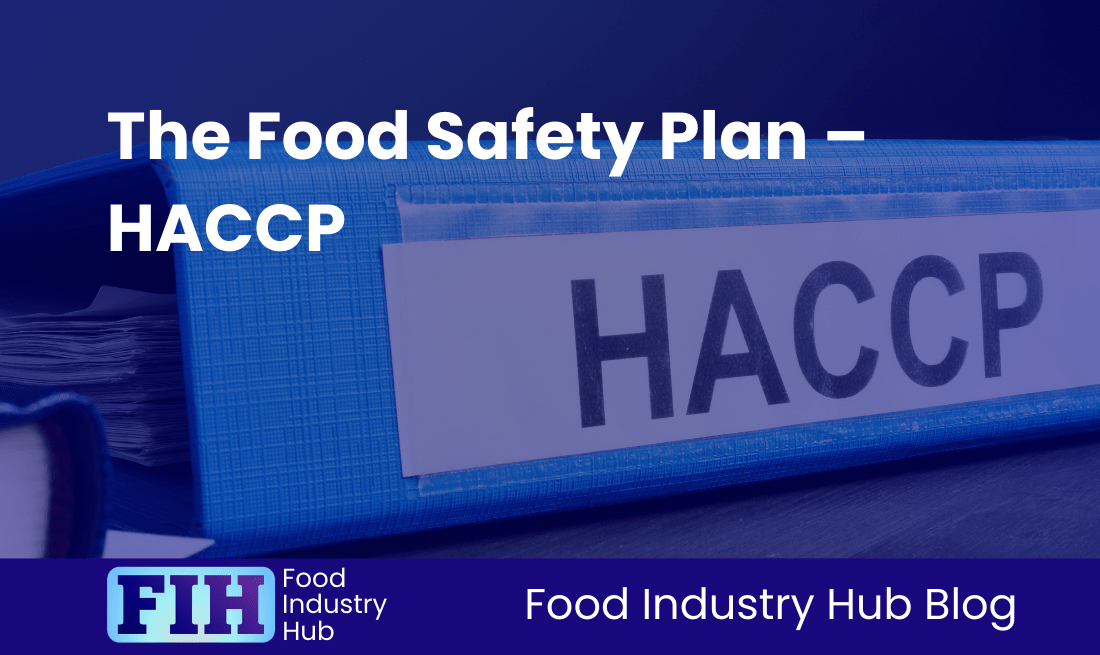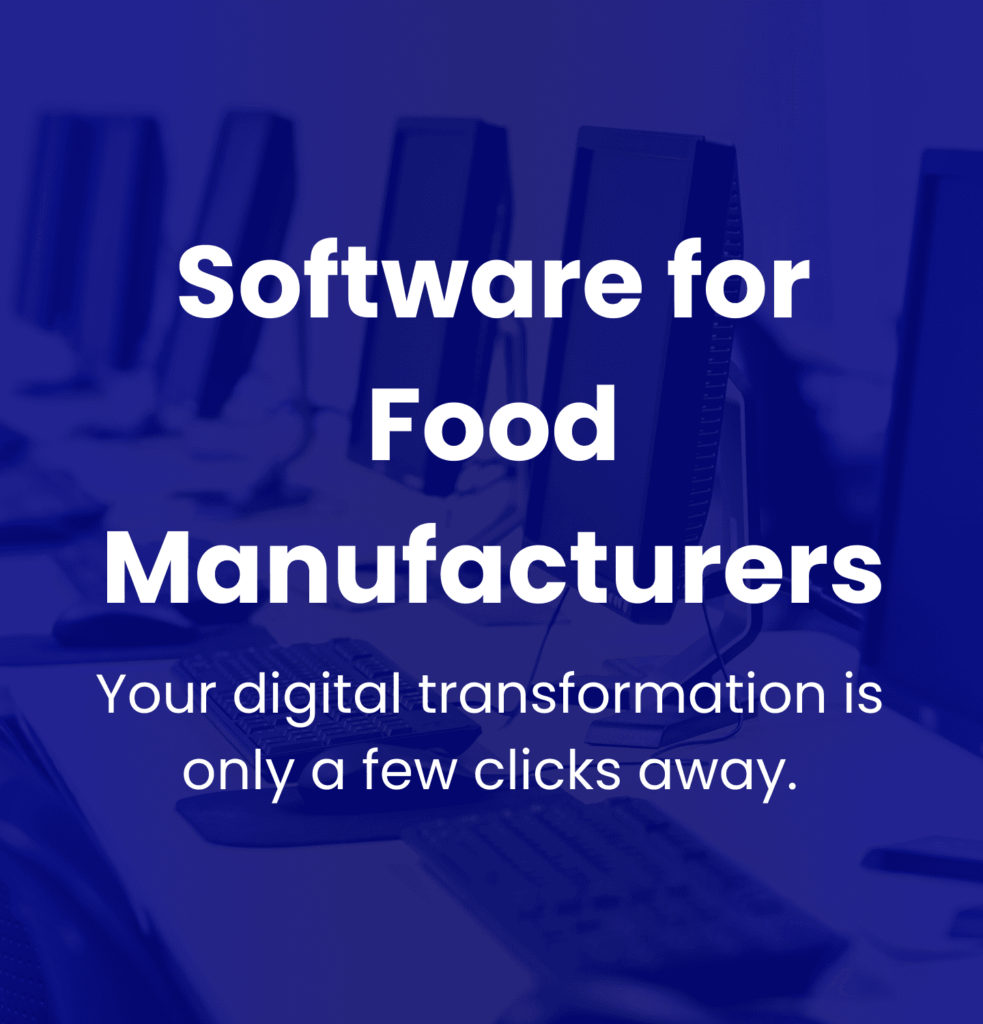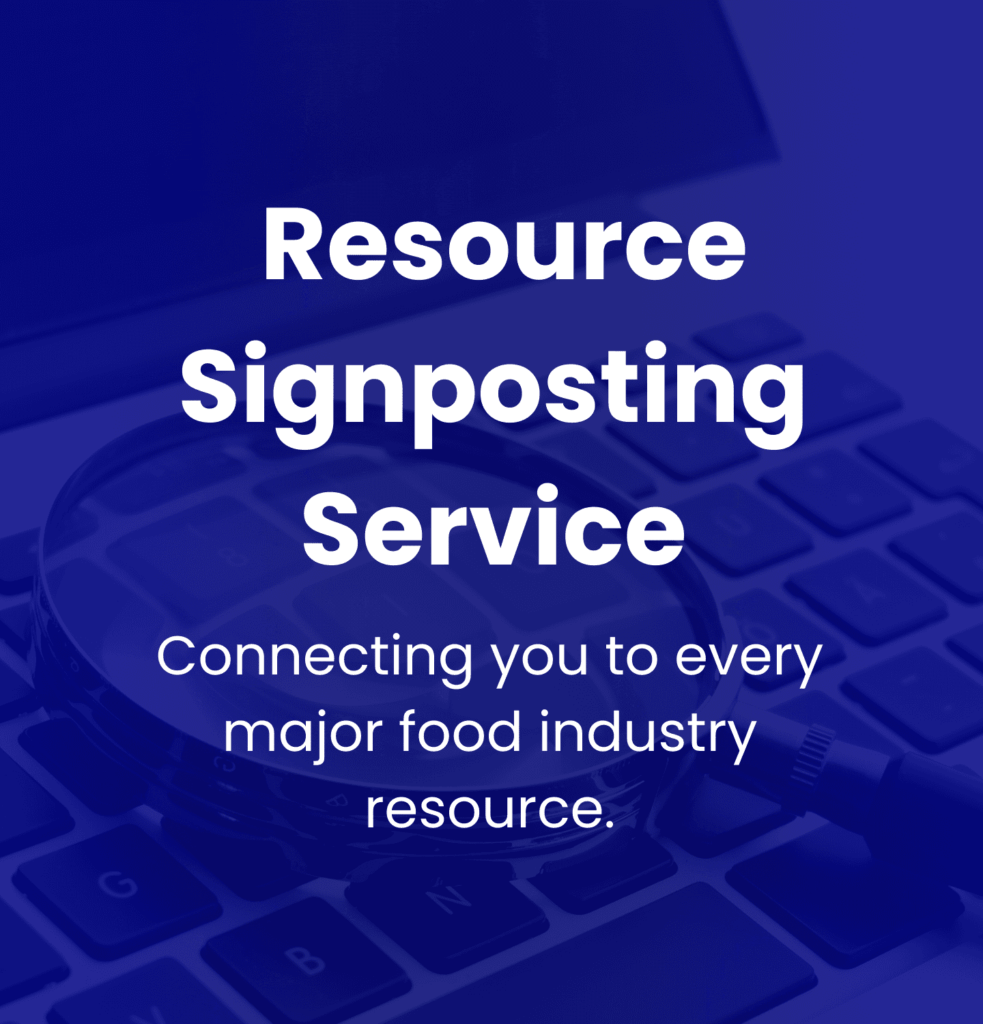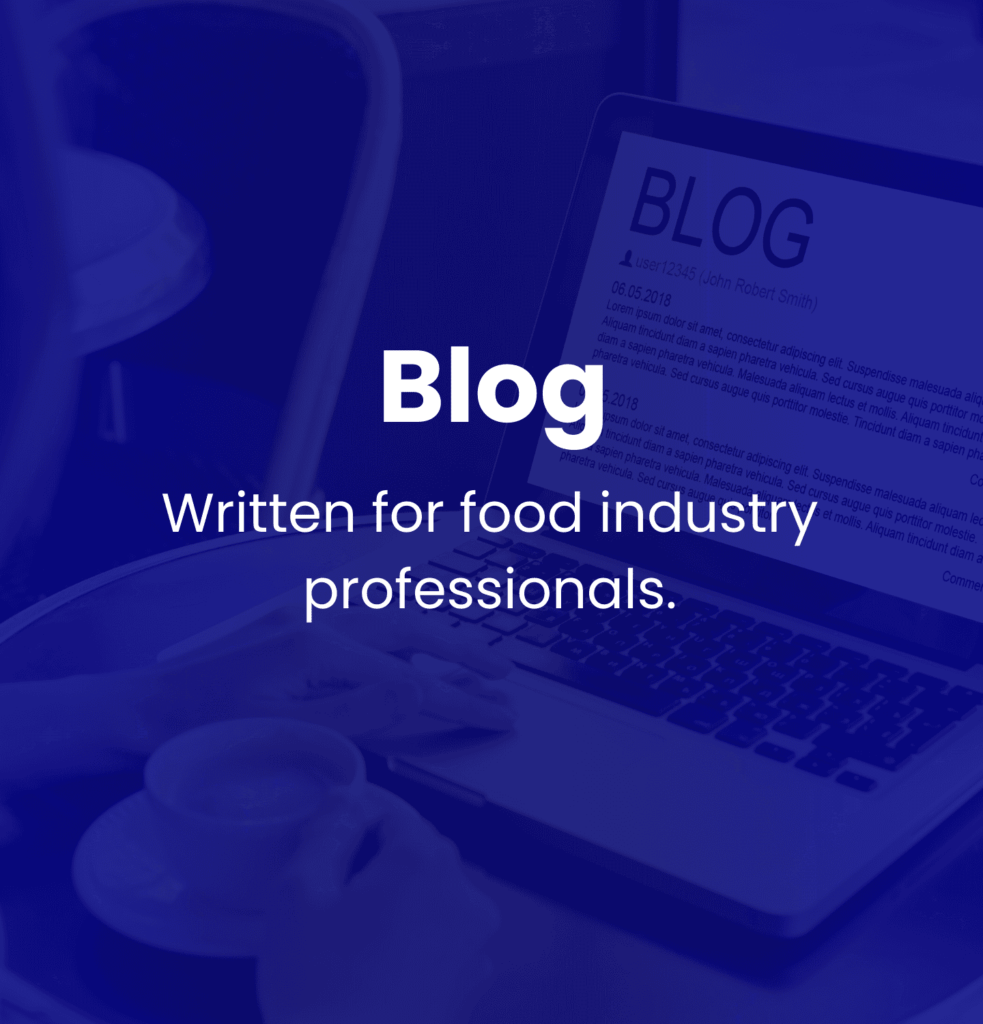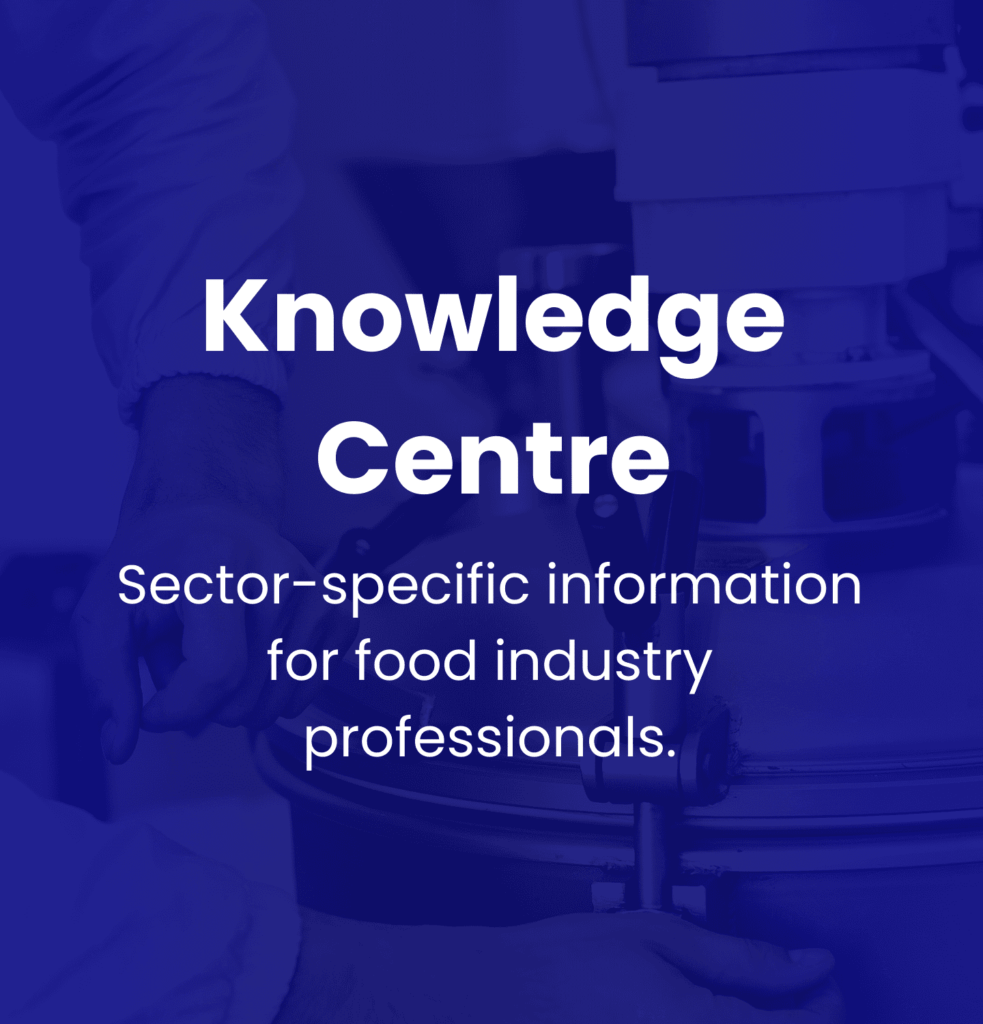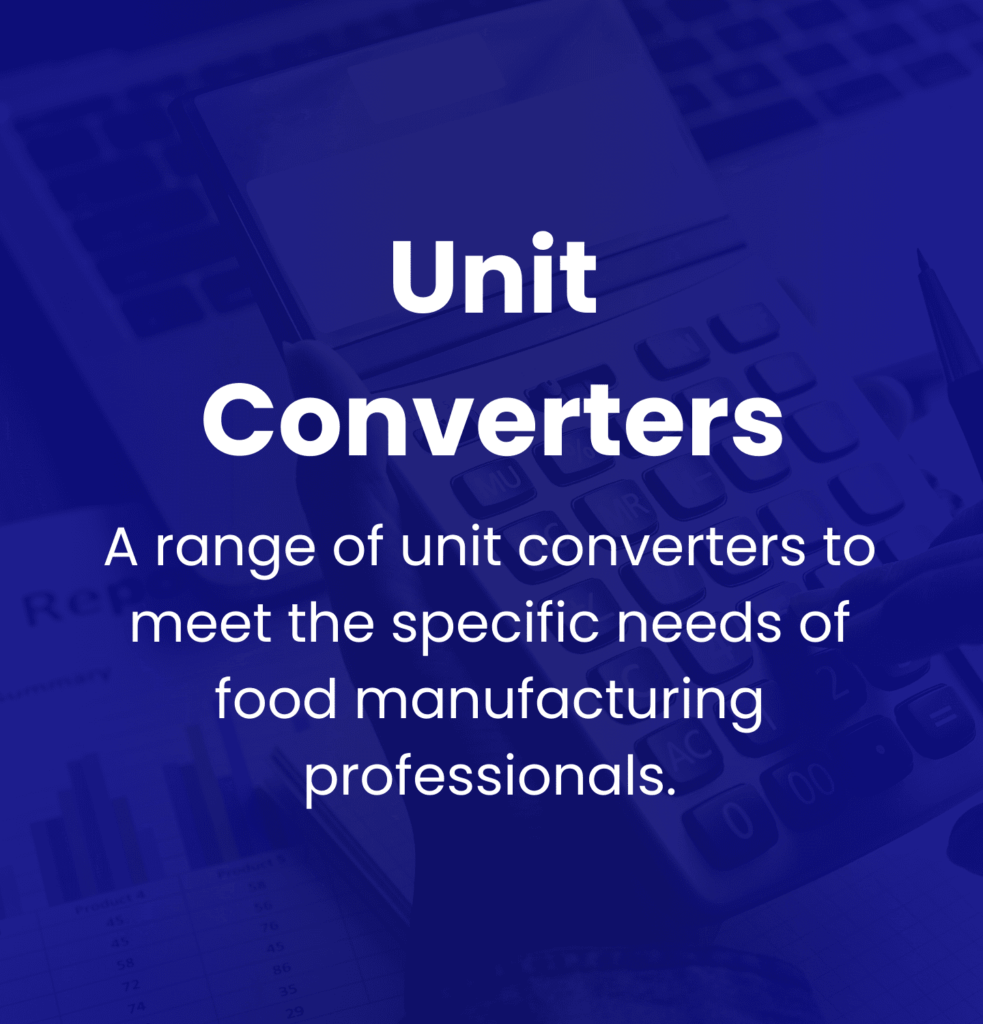Know: Categorisation of Food Safety Hazards
Introduction
The issue of food safety carries immense significance within the manufacturing industry, influencing areas such as consumer health, the standard of the product, and legal compliance related to food items. It is a vast area of study encompassing a multitude of hazards – each potentially causing detrimental effects on public health – which could manifest at any stage of the manufacturing process.
Understanding Food Safety Hazards
The study of food safety extends to a variety of categories, such as biological, chemical, physical, radiological hazards, and allergens. Biological hazards include microorganisms like bacteria, viruses, parasites, and fungi; the latter two include infamous strains such as Salmonella and E. coli, often leading to severe foodborne illnesses. Chemical hazards refer to substances like pesticides, heavy metals, and food additives which may naturally contaminate food or during processing. Physical hazards are external objects like glass or metal fragments that could cause injury upon consumption. While less commonly mentioned, radiological hazards cover potential contamination from radioactive materials. It’s essential to highlight allergens as these substances might inadvertently cause severe health implications for susceptible consumers.
The importance of Food Safety
The importance of food safety extends well beyond the evident health considerations. Ensuring safe food production practices not only guarantees the protection of products from unnecessary risks that could impede their quality but also maintains adherence to legal obligations. Non-compliance towards established food safety regulations can result in severe sanctions and legal problems. Additionally, businesses that implement rigorous food safety standards secure customer trust and reinforce their brand’s reputation by ensuring their product’s authenticity.
Addressing Food Safety
A comprehensive approach towards addressing food safety includes examining control points they susceptibility to such hazards, understanding guiding regulatory frameworks, undergoing risk assessment processes, and effective mitigation strategies. Still, to stay ahead, it’s essential to track and adapt to emerging trends within the industry. Such trends often reflect advances in technology and shifting consumer demands—an all-encompassing viewpoint aids industry professionals in implementing effective safety measures within their operations.
This introduction sets the stage for further study of the types of food safety hazards, providing industry professionals with the necessary understanding to enhance their operations’ safety measures.
Key Takeaways
Food safety hazards present a variety of risks to consumer health. These include biological, chemical, physical and radiological hazards as well as allergens. Each type poses distinctive risks and requires unique management strategies.
Types of Food Safety Hazards
Biological hazards refer to pathogens such as Salmonella and E. coli, which require control measures like proper sanitation and cooking techniques to prevent serious health consequences. Chemical hazards often stem from substances like pesticides and allergens, highlighting the need for cautious ingredient sourcing and accurate labelling practices. Physical hazards are associated with foreign materials like glass or metal, and mandated preventive inspections and quality assurance processes can help manage these. Although less frequent, radiological hazards remain significant, underscoring the importance of regular monitoring to avoid contamination from radioactive materials.
Regulatory Frameworks and Their Role in Food Safety
The way these hazards are grouped and addressed throughout various regions is often informed by local regulatory frameworks. The UK and EU, operating under the Food Standards Agency (FSA) and European Food Safety Authority (EFSA), respectively, uphold robust food safety regulations. Meanwhile, in the USA, the Food Safety Modernization Act (FSMA) administered by the FDA advocates for preventive controls and hazard analysis frameworks to mitigate risks.
Hazard Analysis and Risk Assessment in Food Safety Management
Understanding Hazard Analysis and Risk Assessment processes is a key aspect of effective food safety management. Hazard Analysis involves recognising potential risks at different production stages, whilst Risk Assessment evaluates the probability and impact of these detected hazards. These processes significantly influence the formulation of effective strategies that avert food safety incidents.
Emerging Challenges and Trends in Food Safety
The practice of food safety is subject to ongoing trends and global challenges. Compliance with diverse regional regulations is made more complex by the globalisation of food supply chains, whilst technological advancements offer possibilities for improved monitoring and traceability. Additionally, new biological threats brought about by climate change and alterations in environmental conditions are reshaping the food safety landscape. Given these evolving obstacles, it’s fundamental for food manufacturers to stay updated on emerging risks and implement responsive measures to ensure consumer protection and food quality.
Food Industry Hub Management Systems can significantly boost the effectiveness of your food safety and quality management system, leading to improved confidence and elevated quality assurance throughout your operations.
Core Categories of Food Safety Hazards
Food safety hazards are generally classified into four key types: biological, chemical (including allergenic), physical, and radiological. Each of these categories presents its unique set of challenges, thus requiring tailored strategies for prevention, control, and health impact assessment.
Biological Hazards
Brief Overview and Common Examples: Biological hazards stem from microorganisms such as bacteria, viruses, parasites, and fungi. These small threats can cause foodborne diseases, with notable culprits being Salmonella and E. coli. The former, often discovered in poultry, eggs, and various animal products, can lead to significant gastrointestinal trouble. The latter, particularly strains like O157:H7, is commonly associated with ground beef and contaminated produce. This pathogen is known to cause severe gastrointestinal issues and, in extreme cases, hemolytic uremic syndrome, which can be life-threatening [Source: World Health Organization].
Impact on Food Safety: Biological hazards distinctly shape risk assessments and preventive measures throughout the food supply chain. Therefore, successful management strategies must incorporate Good Hygiene Practices (GHP) and a thorough Hazard Analysis and Critical Control Points (HACCP) approach. This measure allows the identification of risk-heavy areas where contamination probabilities are highest. Implementing robust sanitation protocols, maintaining suitable cooking temperatures, and delivering comprehensive training to food handlers are integral steps for mitigating biological risks. [Source: FSNS] [Source: PMC]
Chemical Hazards
Overview of Chemical Hazards: Chemical hazards refer to various substances capable of contaminating food, which could lead to issues like allergic reactions or prolonged toxicity. Constituents such as allergens, pesticides, heavy metals, and numerous additives constitute this category. Food allergens, for instance peanuts and shellfish, hold the potential to induce severe reactions in certain individuals .
Special Focus on Allergen Management in the UK: In the UK, post-Brexit regulatory measures have placed heightened emphasis on allergen labelling requirements for food manufacturers. The Food Information Regulations necessitate clear allergen labels on food packaging to safeguard consumers. This highlights the need for exhaustive supplier verification alongside personnel training to mitigate allergenic substance cross-contamination issues.
Other Risk Factors: Additional chemical contaminants, such as residues from pesticides and toxic heavy metals, pose substantial health risks. Monitoring these and maintaining compliance with safety regulations are essential to preclude harmful exposure risks.
Physical Hazards
Identification of Diverse Physical Hazards: Physical hazards include various foreign objects that could inadvertently infiltrate food products during their manufacturing or processing stages. These contaminants often take the form of glass shards, bits of metal, or plastic fragments, which could be remnants of machinery wear or instances of human error.
Relevance for Quality Control and Consumer Safety: The existence of physical hazards behoves the establishment of a sturdy quality control system which includes regular equipment checks and the use of detection technologies like metal detectors and X-ray machines. Executing comprehensive inspections of raw materials and finished goods would notably reduce risks linked to physical contaminants, thereby ensuring consumer safety and retaining product integrity.
Radiological Hazards
Examination of Radiological Hazards: Radiological hazards involve the possible presence of radioactive contamination in food. This issue could arise from environmental sources or as the fallout of nuclear incidents. Quite often, this category does not make it into regular discussions but does hold significance in specific scenarios, especially near nuclear facilities.
Impact on Food Production: While less common, the potential health repercussions of radiological hazards are far-reaching, primarily involving increased cancer risks and genetic disorders. This necessitates continuous market and food supply screenings for radioactive impurities, particularly in sectors vulnerable to nuclear contamination. Regulatory bodies play an essential role in establishing protective norms and guidelines against such hazards.
A thorough understanding and proficient handling of these core food safety hazard classifications are fundamental for any food manufacturing endeavour. Establishing effective preventative systems across all categories is key to upholding both food quality and consumer trust.
Regulatory Frameworks and Regional Variations
Overview of Regulatory Frameworks
FSMA’s Preventive Controls Rule (USA):
The Food Safety Modernization Act (FSMA), enacted in the United States, shifts the focus to proactive measures in food safety. The essence of this act is the Preventive Controls for Human and Animal Food Rule. This rule mandates facilities to institute comprehensive measures to identify and mitigate potential hazards throughout the food supply chain. These measures include process controls, sanitation protocols, allergen management, and supply-chain oversight, thereby augmenting safety and accountability [Source: Penn State]. The preventive framework not only reduces risk but also heightens traceability within food production, which is essential to addressing foodborne illnesses and recalls promptly [Source: Washington State University] [Source: GS1 US].
Implications for EU’s General Food Law:
The EU’s General Food Law dovetails with the principles of FSMA by integrating robust traceability requirements and a risk-based approach to food safety. While FSMA instigates a rigorous preventive environment, the EU law requires businesses to ensure full traceability of their food supply from origin to consumer, thereby boosting transparency and consumer safety. The necessity of aligning with both FSMA and EU regulations places complex demands on international food manufacturers operating across these jurisdictions.
Role of CODEX Guidelines:
Established by the FAO and WHO, the CODEX Alimentarius Commission offers indispensable international food safety standards, particularly for multinational manufacturers. Adherence to CODEX guidelines ensures companies meet the minimum food safety requirements worldwide. These standards seek to align practices related to food safety, labeling, and allowable contaminant levels, paving the way for smoother international trade and compliance with diverse national regulations. Therefore, for companies grappling with varied regulatory environments, following CODEX guidelines proves a successful strategy for maintaining food safety and market access.
Regional Specific Regulations
Allergen Labelling Regulations in the UK Post-Brexit:
Following Brexit, the UK has retained significant EU regulations on allergen labeling through the Food Information to Consumers (FIC) Regulation. This stipulation obliges food manufacturers to label allergens such as nuts, gluten, and dairy visibly. The continuous adherence to allergen labeling standards ensures consumer safety remains at the forefront, obliging manufacturers to maintain transparency regarding ingredient use. However, there is potential for future divergence from EU standards as new regulations reflecting post-Brexit policy changes may emerge.
Regional Differences in Enforcement Practices Regarding Radiological Hazards:
There are considerable regional variations in enforcement practices for managing radiological hazards. In the EU, robust regulatory frameworks dictate permissible levels of radiological contamination in food products, driven by expansive monitoring and compliance measures. In contrast, post-Brexit, the UK’s enforcement mechanisms may develop independently, which could result in variations in the control and reporting of radiological hazards. This divergence highlights the need for manufacturers to stay vigilant regarding compliance with both local and international standards in radiological safety.
Familiarity with Key Terminology
HACCP Plan:
The Hazard Analysis and Critical Control Points (HACCP) plan is an internationally recognised systematic approach to food safety that focuses on identifying potential hazards at critical points in the food production process. By developing a HACCP plan, facilities can establish preventive measures to effectively manage food safety risks, fulfilling compliance with FSMA and similar international regulations. [Source: Pennsylvania Department of Agriculture]
Food Hygiene Regulations (UK):
The UK Food Hygiene Regulations are a significant part of the food safety framework, outlining exhaustive standards that companies must abide by in order to maintain a hygienic food production environment. These regulations emphasise cleanliness, proper handling, and the need to prevent contamination in food products, which is important for protecting public health post-Brexit
Risk Characterisation:
Risk characterisation is a central element in the risk assessment process. It involves the evaluation of the nature and extent of hazards within the food safety context. This analytical process guides the development of preventive controls and prioritises actions based on the severity and likelihood of adverse impacts on consumer health. Gaining an understanding of such key regulatory terminology allows manufacturers to better navigate food safety regulations and ensure effective hazard assessments.
Knowledge of these frameworks and terminologies is essential for food manufacturers seeking to navigate complex regulatory landscapes effectively, ensuring compliance with safety standards across various jurisdictions. By staying informed and adaptable, businesses can maintain food safety and quality in a rapidly evolving regulatory environment.
Sign-up for the Food Industry Hub Mail Service
We regularly produce new content for food industry professionals, and the Food Industry Hub Mail Service is the best way to stay up to date with the latest additions.
Signup today to be added to the Food Industry Hub mailing list.
Hazard Analysis and Risk Assessment Processes
The food manufacturing industry plays an instrumental role in ensuring the safety and quality of products reaching consumers. Central to this pursuit is the thorough understanding and application of hazard analysis and risk assessment processes.
Frameworks for Risk Assessment: The CODEX Four-Step Model
The Codex Alimentarius Commission provides a systematic four-step model comprising hazard identification, hazard characterisation, exposure assessment, and risk characterisation for the evaluation of food safety risks.
- Hazard Identification: This first step involves the recognition of potential biological, chemical or physical hazards that might compromise the safety of food products.
- Hazard Characterisation: An evaluation on the nature of each identified hazard is done to understand its potential negative effects on health. This critical assessment consists of factors like severity and dose-response relationships, which are essential in formulating risk management strategies.
- Exposure Assessment: This phase evaluates the likelihood of exposure to these hazards considering factors such as consumer behaviour, food handling practices and environmental conditions.
- Risk Characterisation: Here, the information collected from the previous steps is used to provide an overall picture of the risk, enabling manufacturers to steer their risk management efforts accordingly.
This approach aids food manufacturers in formulating effective preventive measures, thereby enhancing food safety outcomes and adherence to regulatory compliance [Source: Food Safety].
Severity vs. Likelihood Evaluation in Hazard Analysis
The assessment of both severity (the potential harm that a hazard can cause) and likelihood (the probability of the hazard occurring) is a central part of hazard analysis. Evaluating these two dimensions effectively allows manufacturers to prioritise risks, thereby ensuring efficient allocation of resources towards mitigating prominent threats. For instance, even a hazard that could potentially trigger severe health effects but has a low probability of occurrence, might still necessitate significant control measures. This evaluation process supports the establishment of Critical Control Points (CCPs) and implementation of suitable preventive measures.
Components Essential to Food Safety
Importance of Environmental Pathogen Monitoring
Environmental pathogen monitoring is a key aspect in managing the risks of foodborne illnesses. With a comprehensive Environmental Monitoring Program (EMP), food manufacturers can systematically assess potential contamination in production environments. By regularly monitoring pathogens such as Listeria and Salmonella, early detection and prompt corrective actions become achievable, significantly reducing the likelihood of foodborne outbreaks.
Supplier Verification Process
Effective management of potential chemical hazards associated with ingredient sourcing necessitates a thorough supplier verification process. This process includes measures like:
- Qualification Process: Ensures suppliers meet established food safety standards.
- Audits: Regular verification of compliance with these standards, including assessments of supplier facilities and practices.
- Validation Checks: Tests for chemical hazards like pesticides and heavy metals, ensuring incoming ingredients are free from contamination.
This continuous assessment maintains the integrity of the food supply chain and obstructs unsafe ingredients from entering the manufacturing process.
Validation of Preventive Controls
The validation of preventive controls is important in upholding food safety throughout various processing stages. It entails a scientific substantiation that processes, such as sanitation protocols and temperature controls, effectively minimise or eliminate potential hazards. Not only is initial validation crucial, but also ongoing monitoring to make certain that controls stand effective over time. This is emphasised by regulatory bodies like the FDA, as validation is key to ensuring compliance with safety regulations.
Familiarity with Food Safety Terminology
Key terminology such as Critical Control Points (CCPs), Dose-Response Assessment, and Environmental Monitoring Program (EMP) play a significant role in effective hazard analysis and risk management in the food industry. A solid understanding of these terms and their application can improve the effectiveness of hazard analysis and enhance food safety measures.
Mitigation Strategies and Preventive Controls
In the food manufacturing industry, prioritising safety and risk mitigation is essential. The following section explains various core strategies and physical controls that aid in enhancing food safety.
Core Strategies
Thermal Processing in Managing Biological Hazards
Thermal processing functions as an elemental method to control biological hazards in food, especially in ready-to-eat meats and poultry. This technique involves the heating of food to specific temperatures, which reduces or eliminates pathogens like Salmonella, Listeria monocytogenes, and Escherichia coli (E.coli). An example is the achievement of a temperature of 160°F (71°C), which can kill more than 6 logs of these pathogens, ensuring product safety. Certification of equipment through regular maintenance along with detailed temperature control attributes to the significance of thermal processing [Source: Food Safety Magazine].
Allergen Cleaning Validation
Allergen management plays a significant role in preventing the risk of cross-contamination, which could cause severe allergic reactions in sensitive consumers. Comprehensive cleaning validation protocols act as an effective strategy to ensure the complete removal of allergens from equipment and work surfaces. This involves ATP bioluminescence testing (as a non-specific indicator of cleanliness) and allergen-specific tests to verify the successful cleaning of allergen residues. The inclusion of thorough risk assessments, staff training, and documentation of cleaning and allergen control processes not only comply with safety regulations but also protect consumers against unintended allergenic exposures.
Mitigating Chemical Hazards
For efficient management of chemical hazards in food manufacturing, several key strategies are implemented. One approach is the segregation of chemicals, which prevents the risk of cross-contamination with food products. This strategy involves proper storage practices, such as keeping chemicals in designated areas separate from food processing zones. Moreover, establishing robust Supplier Approval Programs, comprising comprehensive audits and verification processes, ensures raw materials comply with safety standards.
Applications of X-ray Inspection Systems
X-ray inspection systems play a substantial role in improving food safety. These systems detect various physical contaminants like metal, glass, and plastic in products. By integrating these non-invasive systems directly into production lines, continuous quality assurance can be achieved. In addition to identifying foreign objects, X-ray systems can also monitor internal defects and assist in compliance to regulatory standards, ensuring the integrity of food products.
Mitigating Chemical Hazards through Supplier Relationships
Establishing strong relationships with suppliers is necessary for managing chemical hazards proficiently. This involves conducting consistent audits to check compliance to safety standards and documenting chemical usage and storage practices. Such a strategy promotes safer practices across the supply chain, ensuring effective control of chemical hazards from sourcing to final processing.
Understanding Essential Physical Controls in Food Safety
A keen understanding of key physical controls is vital in upholding safety in the food manufacturing process.
- Raw materials should be risk assessed for intrinsic and extrinsic foreign body hazards.
- Equipment and site fabrication materials should be maintained and inspected for developing foreign body contamination risks.
- The manufacturing process should be subject to foreign body detection and removal equipment interventions.
Key Terms for Mitigation Strategies
- Kill Step: This refers to a specific process where a marked reduction of pathogen levels occurs, typically through validated thermal processing that eradicates harmful bacteria [Source: Food Safety Magazine].
- Food Defense Plan: This includes complex measures designed to guard food products from intentional contamination. It involves assessments of access and security protocols to impede potential tampering.
- Corrective Action: When deviations from safety protocols are detected, corrective action procedures are imposed. These procedures address issues instantly and prevent future occurrences, upholding the integrity of food safety systems.
With these mitigation strategies and preventive controls in place, food manufacturers can notably boost their food safety protocols and can efficiently manage risks associated with biological, chemical, and physical hazards.
Emerging Trends and Global Challenges in Food Safety
Safeguarding food safety has become an escalating challenge in food manufacturing. Professionals in the industry must be aware of and respond to a variety of emerging trends and global pressures. This section will delve into key aspects of these issues, and shed light on the implications they have on food safety management.
Implications on Hazard Management
Climate change undeniably impacts on biological risks and hazards in food manufacturing. This creates new challenges, but also offers potential opportunities for innovative solutions. Transformations in processing technologies have an integral role to play in addressing these issues and bolstering food safety.
Global Supply Chain Complexities
The increasing complexity in global supply chains poses significant challenges, particularly in terms of compliance with regional regulations and standards. In this context, increased visibility and traceability are becoming essential components of an effective supply chain management strategy. There are emerging non-thermal pathogen control methods that warrant attention, as they promise to offer more efficient solutions for food safety in the future.
Anticipating Future Challenges in Food Safety
Anticipating future challenges in food safety is becoming an increasingly complex task, with the constant evolution of potential hazards and the diversity of food production systems worldwide. Innovative strategies such as precision fermentation, biofilm disruption, and horizon scanning are being utilised as approaches to address these challenges proactively.
Conclusion
Understanding the multiple categories of food safety hazards—biological, chemical, physical, and allergens—is integral to the food manufacturing industry. Each carries unique risks which call for specific management measures. Biological hazards, including bacteria like Sal.monella and E. coli, viruses such as hepatitis A and parasites like Giardia, can result in severe foodborne illnesses. Effective management practices, including thorough sanitation and temperature control, play a key role in reducing these hazards.
Chemical risks cover a variety of substances, such as pesticides and heavy metals, as well as allergens—such as peanuts and shellfish—that require careful labeling and handling to protect susceptible consumers. The existence of physical hazards, like glass or metal fragments, highlights the need for comprehensive inspection protocols and danger controls throughout the manufacturing process. By understanding these categories, stakeholders can bring into play proactive preventative measures minimising risks to public health and building consumer confidence in food products.
Impact of Regional Regulatory Frameworks
The importance of regional regulatory frameworks in dictating the structure of hazard assessment and risk mitigation practices cannot be overstated. The Food Safety Modernisation Act (FSMA) in the U.S. leans towards preventive measures over reactive actions, setting mandatory risk-based preventive controls as the standard. This contrasts with the European Union’s General Food Law which focuses on ensuring a comprehensive food safety management framework that protects consumer health. Companies operating internationally need to navigate varying regulations in allergen labeling and traceability, making compliance a key factor to avoid expensive recalls or import bans.
Emerging Trends and Global Challenges
Emerging trends in food safety underscore the need for ongoing changes in industry practices. The increasing globalisation of food supply chains exposes vulnerabilities that need to be addressed through robust regulatory frameworks and innovative technologies. Advances in pathogen detection technologies, such as real-time monitoring systems, have enabled quicker identification of contaminants leading to speedy response measures. Climate change is also reshaping the food safety landscape as it affects the prevalence and spread of biological hazards.
Ongoing Advancements in Food Safety Management
Sustained improvements in food safety management practices are key to tackling evolving hazards and enhancing consumer protection. Investing in best practices—like upgraded Hazard Analysis and Critical Control Points (HACCP) systems—and conducting regular training for food handlers ensures compliance with evolving regulations and maintains safety standards. Building a culture of safety and continuous learning amongst stakeholders encourages a safer food environment, ultimately working to the benefit of consumer health and the overall robustness of the food manufacturing industry.
About The Food Industry Hub Knowledge Centre
The Food Industry Hub knowledge centre delivers informative content on a variety of topics pertinent to the food manufacturing industry.
You can return to all topics by clicking here.
From The Food Industry Hub Signposting Service
Additional resources from The Food Industry Hub Signposting Service.
From The Food Industry Hub Blog
Expanding on this topic with related content from our blog.
